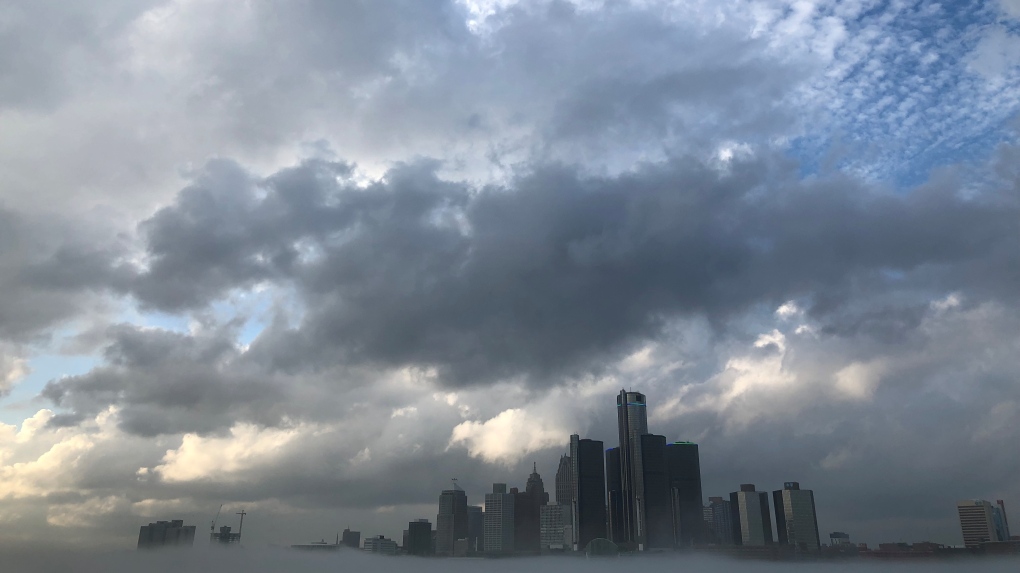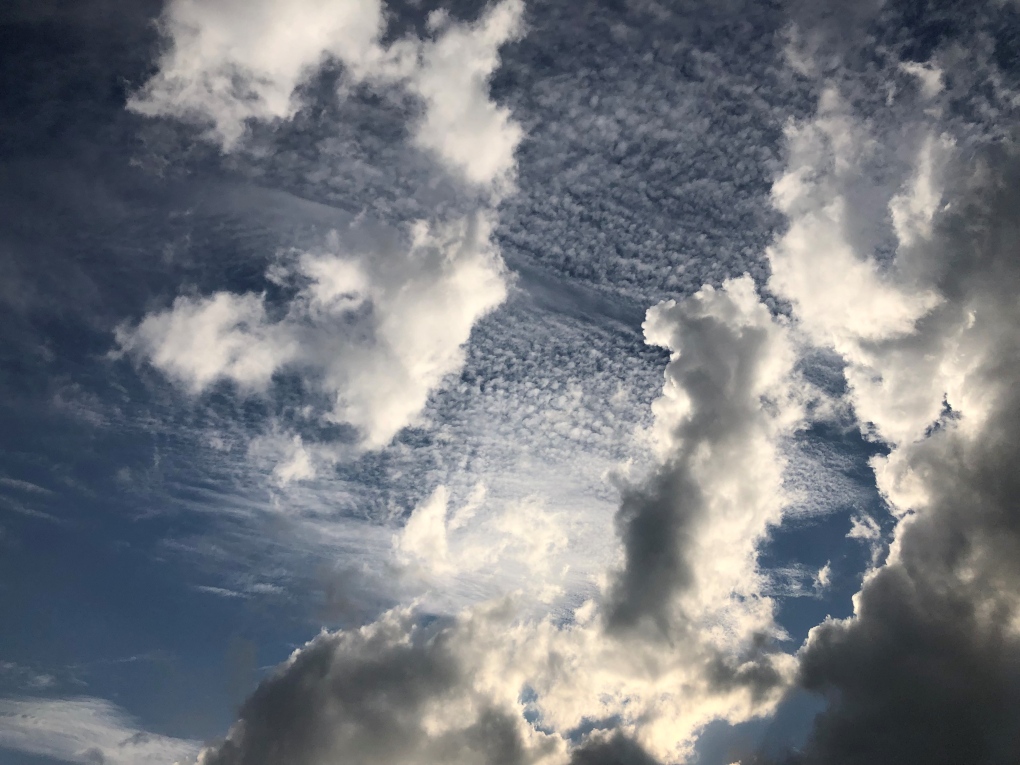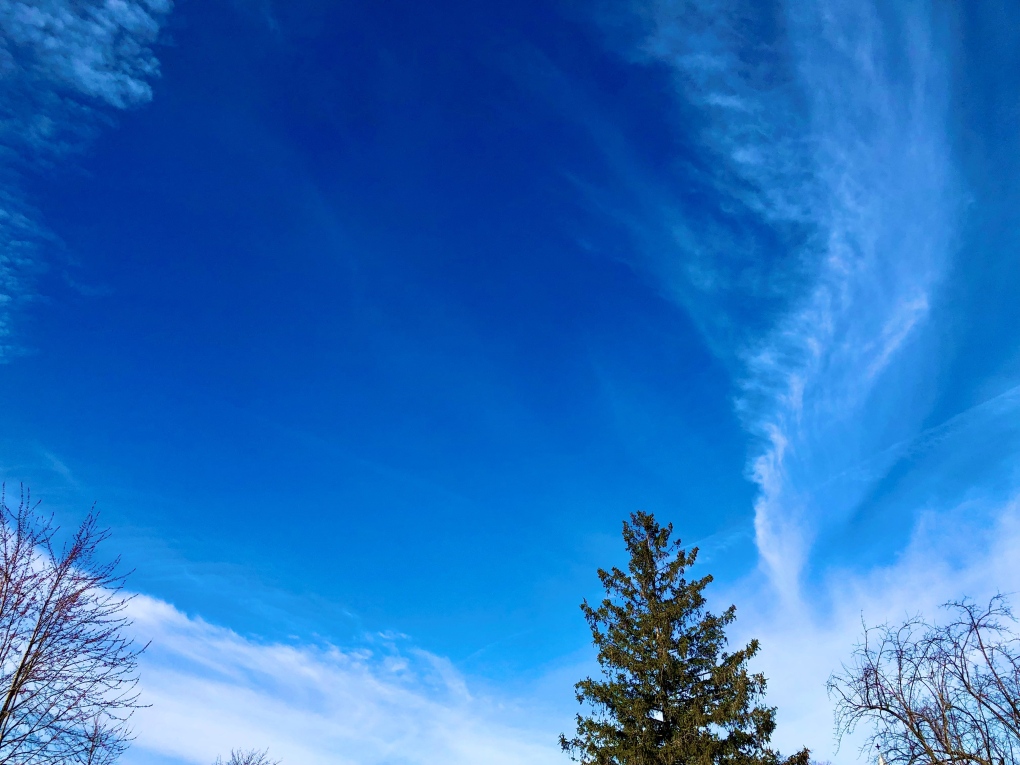The Weather Word of the Day – Cloud (Part One)
 Different cloud types in scene – including fog rolling over Detroit River. (Gary Archibald/CTV News Windsor)
Different cloud types in scene – including fog rolling over Detroit River. (Gary Archibald/CTV News Windsor)
Ladies and gentlemen! Welcome! It’s your local meteorologist here to talk about the dynamic world of weather – meteorology and related fields – in this first installment of The Weather Word of the Day.
We’ll just get our feet wet for starters. Today’s weather world is a crowd favourite: CLOUD (part one).
By definition a cloud is a visible aggregate of minute water droplets or ice particles in the atmosphere above the Earth's surface. High and low clouds depicted are an indication varying thermodynamics at play. (Gary Archibald/CTV News Windsor)
High and low clouds depicted are an indication varying thermodynamics at play. (Gary Archibald/CTV News Windsor)
On a personal note, as a young boy growing up in Scarborough Ontario, warm and humid days would give rise (weather pun intended) to some lofty and poetry-inspiring atmospheric creations. Clouds, as it were, would form and change rapidly at times spewing rain, gusty winds – and some times erupt into thunderstorms. Of course, there too, were afternoons where docile clouds would form high above revealing what seemed to be faces, birds of prey and even dinosaurs. To a young boy with a healthy imagination and love of science - these experiences, vivid and dramatic, were captivating and fascinating – setting the stage for a future career as a meteorologist.
Clouds tell us a lot about the state of our atmosphere in the present and the likely future of our local, regional and even global weather. It is the ebb and flow of water in its three states (liquid, solid – ice or ice crystals and as vapour/gas), along with atmospheric pressure (barometric), energy, and temperature flux that in a nutshell, determines how, when and where clouds will form.
In addition, the factor of time is critical too. All of the ingredients mentioned above work according to the laws of physics over time in a dimension of space – that being an area within our atmosphere. Clouds form at different heights (altitudes), too. Fog, for example forms at the surface. Cirrus clouds, are primary high level formations made up of ice crystals and can be form well over 40- thousand feet. Clouds with the prefix ‘alto’ are mid-level clouds (e.g. altocumulus). The ‘nimbo’ in nimbostratus or cumulonimbus denotes a cloud that is producing precipitation (e.g. rain). High level cirrus clouds. (Gary Archibald/ CTV News Windsor)
High level cirrus clouds. (Gary Archibald/ CTV News Windsor)
Clouds that produce precipitation and wind are of the most concern for people – where we live, work and play. Snow, ice pellets, graupel, rain are all forms of active weather that are produced by clouds. Moreover, systems of weather – low pressure areas are cloud-laden – with the most potent forms (on a macro scale – hurricanes or typhoons, and on a micro scale tornadoes).
There’s so much more to discuss and breakdown but I think we’re off to a great start! I’m excited to share! I hope that you are too. Get out there and photograph your weather. You can submit your images to be seen on our 6 p.m. CTV News Windsor show as our Weather Snapshot of the Day.
Stay tuned for my next installment of The Weather Word of the Day: CLOUDS (Part Two).
Until next time – take care and enjoy your weather!
CTVNews.ca Top Stories

Montreal man dead after boat explodes in Fort Lauderdale
A Montreal man is dead and several others are injured after a boat exploded in Fort Lauderdale, Florida.
Mother-daughter duo pursuing university dreams at the same time
For one University of Windsor student, what is typically a chance to gain independence from her parents has become a chance to spend more time with her biggest cheerleader — her mom.
Azerbaijani airliner crashes in Kazakhstan, killing 38 with 29 survivors, officials say
An Azerbaijani airliner with 67 people onboard crashed Wednesday near the Kazakhstani city of Aktau, killing 38 people and leaving 29 survivors, a Kazakh official said.
Historical mysteries solved by science in 2024
This year, scientists were able to pull back the curtain on mysteries surrounding figures across history, both known and unknown, to reveal more about their unique stories.
King Charles III focuses Christmas message on healthcare workers in year marked by royal illnesses
King Charles III used his annual Christmas message Wednesday to hail the selflessness of those who have cared for him and the Princess of Wales this year, after both were diagnosed with cancer.
Alberta premier hopes for health reform payoff in 2025, regrets deferring tax cut
"It may have been better for Albertans if we'd implemented and then found a way to be able to pay for it."
NFL's Netflix debut on Christmas Day kicked off without a glitch
Mariah Carey opened Wednesday’s doubleheader with a taped performance of “All I Want for Christmas is You” before Patrick Mahomes, Travis Kelce and the two-time defending Super Bowl champion Kansas City Chiefs faced off against Russell Wilson, T.J. Watt and the Pittsburgh Steelers.
Second storm incoming for Christmas Day in southern B.C.
Environment Canada has issued a new series of weather warnings for British Columbia’s south coast Christmas morning.
Pope urges 'all people of all nations' to silence arms and overcome divisions in Christmas address
Pope Francis in his traditional Christmas message on Wednesday urged 'all people of all nations' to find courage during this Holy Year 'to silence the sounds of arms and overcome divisions' plaguing the world, from the Middle East to Ukraine, Africa to Asia.


































